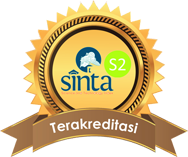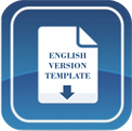ANALYSIS THE 21ST CENTURY SKILLS OF STUDENTS IN CHEMICAL EQUILIBRIUM LEARNING WITH FLIPPED CLASSROOM-COLLABORATIVE PROBLEM SOLVING MODEL
DOI:
https://doi.org/10.15575/jtk.v5i1.7971Keywords:
21st century skills, flipped classroom, collaborative problem solvingAbstract
This study aimed to analyze the 21st century skills of students in learning chemical equilibrium with the Flipped Classroom-Collaborative Problem Solving model. Flipped Classroom is a learning model that students learn first outside the classroom through video, then carry out active activities in class such as discussions, presentations, making posters, and doing practicum. Collaborative problem solving is done when students discuss in solving problems for each learning activity. The research method used descriptive qualitative method. Data collection techniques were: observation, interviews, questionnaires, and reflective journals. Data analysis consisted of several stages, namely data collection, data reduction, data presentation, and verification or conclusions. Based on data analysis, this learning model made students active in learning and also made the students learn independently outside the classroom using mobile learning and searching some sources of references. In addition, students were actively involved in problem solving discussions, presentations, making projects, and practicums that were designed by students themselves. Thus it can be concluded that the Flipped Classroom-Collaborative Problem Solving learning model can train and grow students critical thinking skills, creativity and innovation skills, communication skills, and collaborative skills in learning chemical equilibrium.
References
Asiksoy, G., & Özdamli, F. (2016). Flipped classroom adapted to the ARCS model of motivation and applied to a physics course. Eurasia Journal of Mathematics, Science and Technology Education, 12(6), 1589–1603.
Avery, K. F. G., Huggan, C. T., & Preston, J. P. (2018). The Flipped Classroom: High School Student Engagement Through 21st Century Learning, in Education, 24(1), 4-21.
Chang, R. (2010). Chemistry 10th Edition. New York: McGraw-Hill.
Entezari, M., & Javdan, M. (2016). Active Learning and Flipped Classroom, Hand in Hand Approach to Improve Students Learning in Human Anatomy and Physiology, International Journal of Higher Education, 5(4), 222–231.
Foldnes, N. (2016). The flipped classroom and cooperative learning: Evidence from a randomised experiment, Active Learning in Higher Education, 17(1), 39–49.
Hart, C., Warburton, S., & Westera, B. (2019). De prinses en de pakjes. E-Tech: Jurnal Ilmiah Teknologi Pendidikan, 6(2), 1-13.
Hemant, P., Sharma, L., & Chowdhry, M. (2018). Empowering Millennial Learners through Flipped Classroom Learning Pedagogy, International Journal of Research in Engineering, IT and Social Sciences, 8(5), 250-253.
Herborn, K., Stadler, M., Mustafić, M., & Greiff, S. (2018). The assessment of collaborative problem solving in PISA 2015: Can computer agents replace humans?, Computers in Human Behavior, 104, 1-31.
Hwang, G. J., & Chen, P. Y. (2019). Effects of a collective problem-solving promotion-based flipped classroom on students’ learning performances and interactive patterns, Interactive Learning Environments, 1-16.
Kittur, J. (2016). Implementation of Student - Team - Achievement - Divisions Activity and Flipped Classroom to Enhance Student Learning, Journal of Engineering Education Transformations.
Koc, E. W., Koncz, A. J., Eismann, L., & Longenberger, A. (2018). Job Outlook 2018 NonMember. 0–43. (http://www.naceweb.org/store/2017/job-outlook-2018/), diakses November 2019.
Kurnianto, B., Wiyanto & Haryani, S. (2020). Critical Thinking Skills and Learning Outcomes by Improving Motivation in the Model of Flipped Classroom, Journal of Primary Education, 9(3), 282–291.
Lin, Y. T. (2019). Impacts of a flipped classroom with a smart learning diagnosis system on students’ learning performance, perception, and problem solving ability in a software engineering course, Computers in Human Behavior, 95, 187–196.
Lo, C. K., & Hew, K. F. (2017). A critical review of flipped classroom challenges in K-12 education: possible solutions and recommendations for future research, Research and Practice in Technology Enhanced Learning, 12(1).
Paristiowati, M., Erdawati, & Nurtanti, A. (2018). The Effect of Flipped Classroom-Project Based Learning Model and Learning Independence toward Students’ Achievement in Chemical Bonding Case Study in SMA Santa Ursula Jakarta. Proceedings of the 2017 international conference on education and e-learning, 22-25, Bangkok: Association for Computing Machinery.
Paristiowati, M., Fitriani, E., & Aldi, N. H. (2017). The effect of inquiry-flipped classroom model toward students’ achievement on chemical reaction rate. AIP Conference Proceedings, 1868, AIP Publishing LLC.
Phillips, C. R., & Trainor, J. E. (2014). Millennial Students and The Flipped Classroom, Journal of Business and Educational Leadership, 5(1), 102-112.
Putri, M. D., Rusdiana, D., & Rochintaniawati, D. (2019). Students’ conceptual understanding in modified flipped classroom approach: An experimental study in junior high school science learning, Journal of Physics: Conference Series, 1157(2).
Rahman, A. A., Aris, B., Rosli, M. S., Mohamed, H., Abdullah, Z., & Zaid, N. M. (2015). Significance of preparedness in flipped classroom, Advanced Science Letters, 21(10), 3388–3390.
Rau, M. A., Kennedy, K., Oxtoby, L., Bollom, M., & Moore, J. W. (2017). Unpacking “active Learningâ€: A combination of flipped classroom and collaboration support is more effective but collaboration support alone is not, Journal of Chemical Education, 94(10), 1406–1414.
RodrÃguez, G., DÃez, J., Pérez, N., Baños, J. E., & Carrió, M. (2019). Flipped classroom: Fostering creative skills in undergraduate students of health sciences, Thinking Skills and Creativity, 33, 100575.
Roekel, D. V. (2010). Preparing 21st Century Students for a Global Society, An Educator’s Guide to the “Four Csâ€: The Importance of Critical Thinking. (http://www.nea.org/assets/docs/A-Guide-to-Four-Cs.pdf), diakses November 2019.
Sojayapan, C., & Khlaisang, J. (2020). The effect of a flipped classroom with online group investigation on students’ team learning ability, Kasetsart Journal of Social Sciences 41(1), 28–33.
Sugiyono. (2016). Metode Penelitian: Kuantitatif, kualitatif, dan R&D. Bandung: Alfabeta.
Swiecki, Z., Ruis, A. R., Farrell, C., & Shaffer, D. W. (2019). Assessing individual contributions to Collaborative Problem Solving: A network analysis approach, Computers in Human Behavior, 104, 105876.
Tazijan, F. N., Baharom, S. S., & Shaari, A. H. (2016). Building communication skills through flipped classroom. Proceedings of ISELT FBS Universitas Negeri Padang, 4(1), 289-295, Padang: Universitas Negeri Padang.
Yu, Z., & Zhu, Q. (2019). Schema Theory-Based Flipped Classroom Model Assisted With Technologies, International Journal of Information and Communication Technology Education, 15(2), 31–48.
Zainuddin, Z., & Halili, S. H. (2016). Flipped classroom research and trends from different fields of study, International Review of Research in Open and Distance Learning, 17(3), 313–340.
Zheng, W., Becker, T., & Ding, X. (2014). The Effects of “Flipped Classroom†Concept on the Effectiveness of Teaching. 2014 ASEE North Midwest Section Conference, 1-7, Iowa: University of Iowa.
Zubaidah, Siti. (2016). Keterampilan Abad Ke-21: Keterampilan Yang Diajarkan Melalui Pembelajaran, Seminar Nasional Pendidikan, 2(2), 1–17
Downloads
Published
How to Cite
Issue
Section
Citation Check
License
Authors who publish with this journal agree to the following terms:
- Authors retain copyright and grant the journal right of first publication with the work simultaneously licensed under a Creative Commons Attribution-ShareAlike that allows others to share the work with an acknowledgement of the work's authorship and initial publication in this journal.
- Authors are able to enter into separate, additional contractual arrangements for the non-exclusive distribution of the journal's published version of the work (e.g., post it to an institutional repository or publish it in a book), with an acknowledgement of its initial publication in this journal.
- Authors are permitted and encouraged to post their work online (e.g., in institutional repositories or on their website) prior to and during the submission process, as it can lead to productive exchanges, as well as earlier and greater citation of published work (See The Effect of Open Access).








